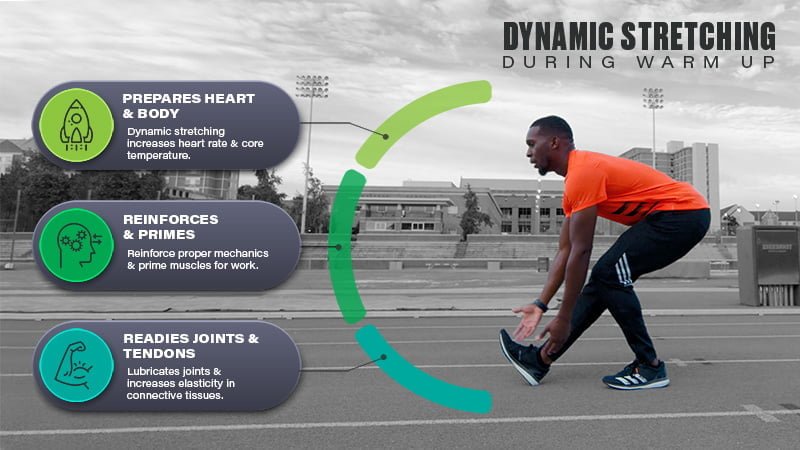
The Essential Role of Dynamic Warm-Ups
Introduction
Are you truly getting the most out of your workouts? Often, the crucial pieces of warm-ups and cool-downs get left behind in the hustle and bustle of fitness routines. But trust me, these elements are vital for boosting your performance, preventing injuries, and enhancing flexibility. Many fitness enthusiasts overlook them, but they can be your best allies in achieving your goals. In this guide, we’re going to unpack why dynamic warm-ups and mindful cool-downs matter—and we’ll back it all up with solid science. Plus, we’ll sprinkle in some practical tips and insights to help you get your body ready for action and recover afterward. Let’s jump right in!
—
The Essential Role of Dynamic Warm-Ups
Why Dynamic Warm-Ups Matter
Let’s talk about dynamic warm-ups—they’re a game changer! Unlike static stretching, which might actually drag your strength down if done too early, dynamic movements pump up your blood flow, fire up your muscles, and get your nervous system in gear. Think of them as a vital prep step that helps you not only get ready but also enhances your coordination and reaction time.
Actionable Tips:
– Duration: Aim for a dynamic warm-up that lasts about 5 to 10 minutes. This is your golden window to get your body primed and ready.
– Activities: Mix in some light jogging, high knees, butt kicks, arm swings, and leg swings. Make sure to choose movements that mimic what you’ll be doing in your workout; this will get your specific muscle groups ready to roll.
Customized Warm-Ups for Different Activities
It’s all about personalization. Make your warm-up suit the workout you’re gearing up for. If you’re hitting the weights, consider doing lighter sets of the exact exercises you’ll be tackling. Planning to go for a run? Try incorporating lunges and hip circles to loosen those legs up.
Example Warm-Up Routine for Running:
1. Start with 2-3 minutes of brisk walking or light jogging
2. Add in dynamic stretches: walking lunges, leg swings, and arm circles
3. Finish with a gradual acceleration, ramping up to your race pace for the last minute
—
The Timing of Stretching: Before or After?
The Science Behind Stretching
You might be wondering about stretching—when’s the right time to do it? Research shows that the sweet spot for stretching is after your workouts when your muscles are warm and ready to stretch further. Doing static stretches beforehand can actually decrease your strength performance and doesn’t offer much in the way of injury prevention.
Key Findings:
– Static stretching before exercise doesn’t significantly reduce your injury risk.
– It could even put a damper on your athletic performance right afterward.
Integrating Stretching into Your Routine
After you finish your workout, dedicate a few moments to stretch out all the major muscle groups. Hold each stretch for at least 20-30 seconds to really reap the benefits.
Sample Post-Workout Stretch Routine:
1. Hamstring stretch
2. Quadriceps stretch
3. Shoulder stretch
4. Chest stretch
5. Lower back stretch
Remember: listen to your body and never push into pain!
—
The Vital Role of Cool-Downs
Benefits of a Cool-Down
Like warm-ups, cool-downs are a must in your fitness routine. They help your heart rate slowly come back down and ease your muscles into relaxation mode, making it simpler for your body to transition from workout mode back to rest. Plus, it’s an excellent time to focus on flexibility with some static stretching.
Why Cool-Downs Matter:
– Promote Recovery: They help speed up your body’s recovery process.
– Prevent Dizziness: Gradually lowering your heart rate can keep you from feeling lightheaded.
– Improve Flexibility: Stretch while your muscles are still warm—it’s the perfect window!
How to Effectively Cool Down After Exercise
A cool-down usually spans about 5-10 minutes. Start with a gentle activity, like walking or slow cycling, before you shift into static stretches.
Example Cool-Down Routine:
1. 5 minutes of slow walking
2. Follow up with gentle static stretches, focusing on each major muscle group
—
Practical Application of Warm-Ups and Cool-Downs
Putting Warm-Up and Cool-Down Routines Into Action
Whether you’re an athlete, a personal trainer, or just someone who loves to work out, weaving these warm-up and cool-down practices into your training is crucial. Here’s how to get started:
1. Assess Your Needs: Figure out the types of workouts you regularly do and customize your warm-up and cool-down to suit those.
2. Consistency is Key: Treat these routines as essential parts of your workouts. Track your sessions and see how they boost your performance and recovery.
3. Stay Educated: Keep learning about new exercises and techniques that can elevate these important aspects of your training.
Example Workout Plan With Warm-Ups and Cool-Downs
– Day 1: Strength Training
– Warm-up: 5 minutes of light jogging, dynamic lunges, and light weight sets
– Workout: Full-body strength exercises
– Cool-down: Slow walking followed by static stretching
– Day 2: Running
– Warm-up: Dynamic stretches and gradual acceleration
– Workout: Interval training
– Cool-down: Walking and stretching major leg muscles
—
Conclusion
Warm-ups and cool-downs aren’t just extra steps in your workout—they’re the secret sauce to unlocking your optimal performance and speeding up recovery. By making a habit of dynamic warm-ups and intentional cool-downs, you can minimize injury risk, boost your workout efficiency, and improve your flexibility.
So, how about you put this knowledge into action? Make these practices suit your training style and don’t hesitate to tweak them along the way. I’d love to hear your thoughts and experiences in the comments below. Let’s take that first big step together toward transforming your workout routine!
—
Follow these insights and practices, and watch as your fitness journey flourishes. Proper warm-ups and cool-downs lay the groundwork for your long-term success. You’ve got this!
Hashtags: #warm #cool #down #workout #downs #dynamic #stretching #stretch #about #static #into #these #they #body #routine
